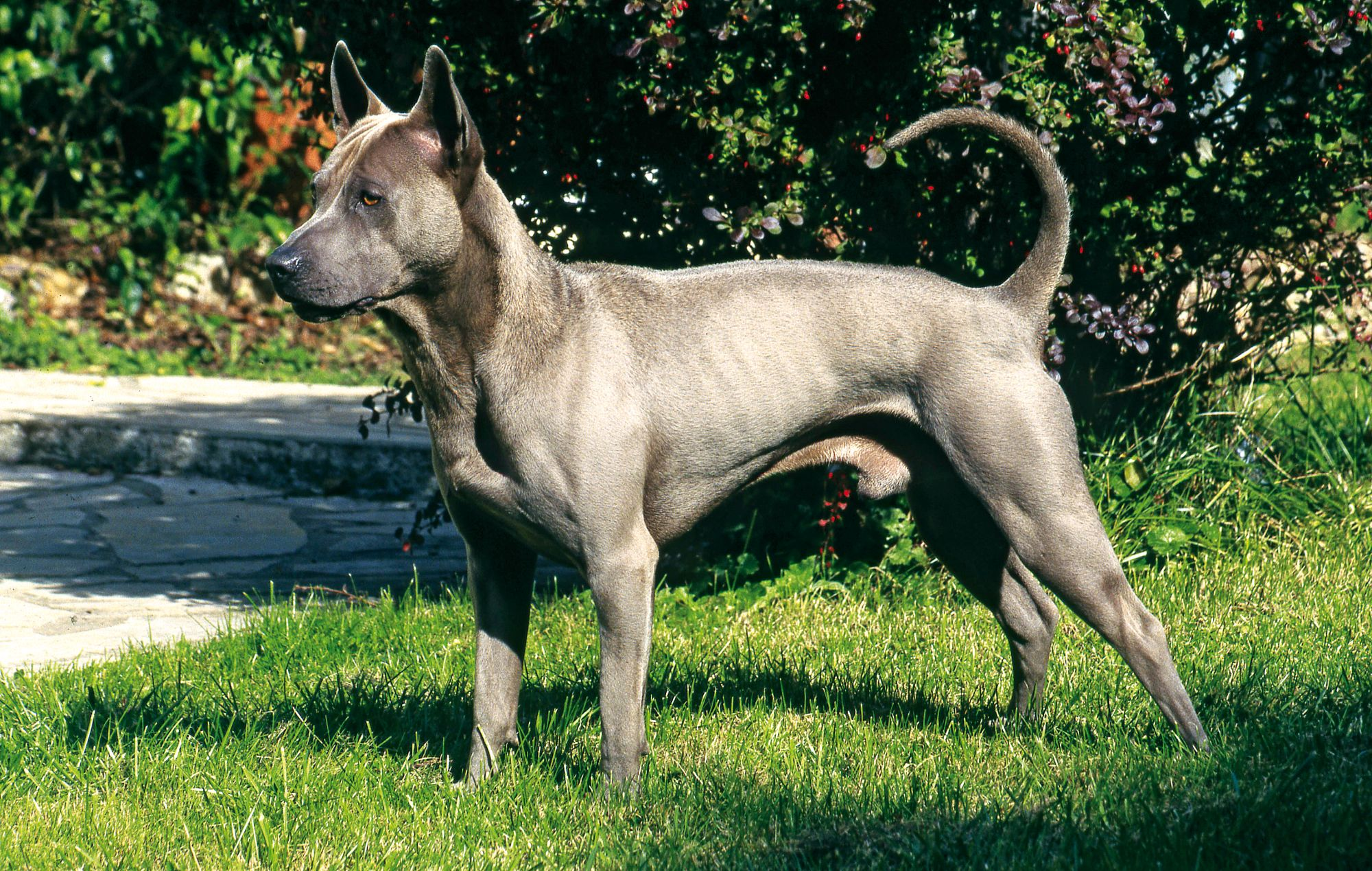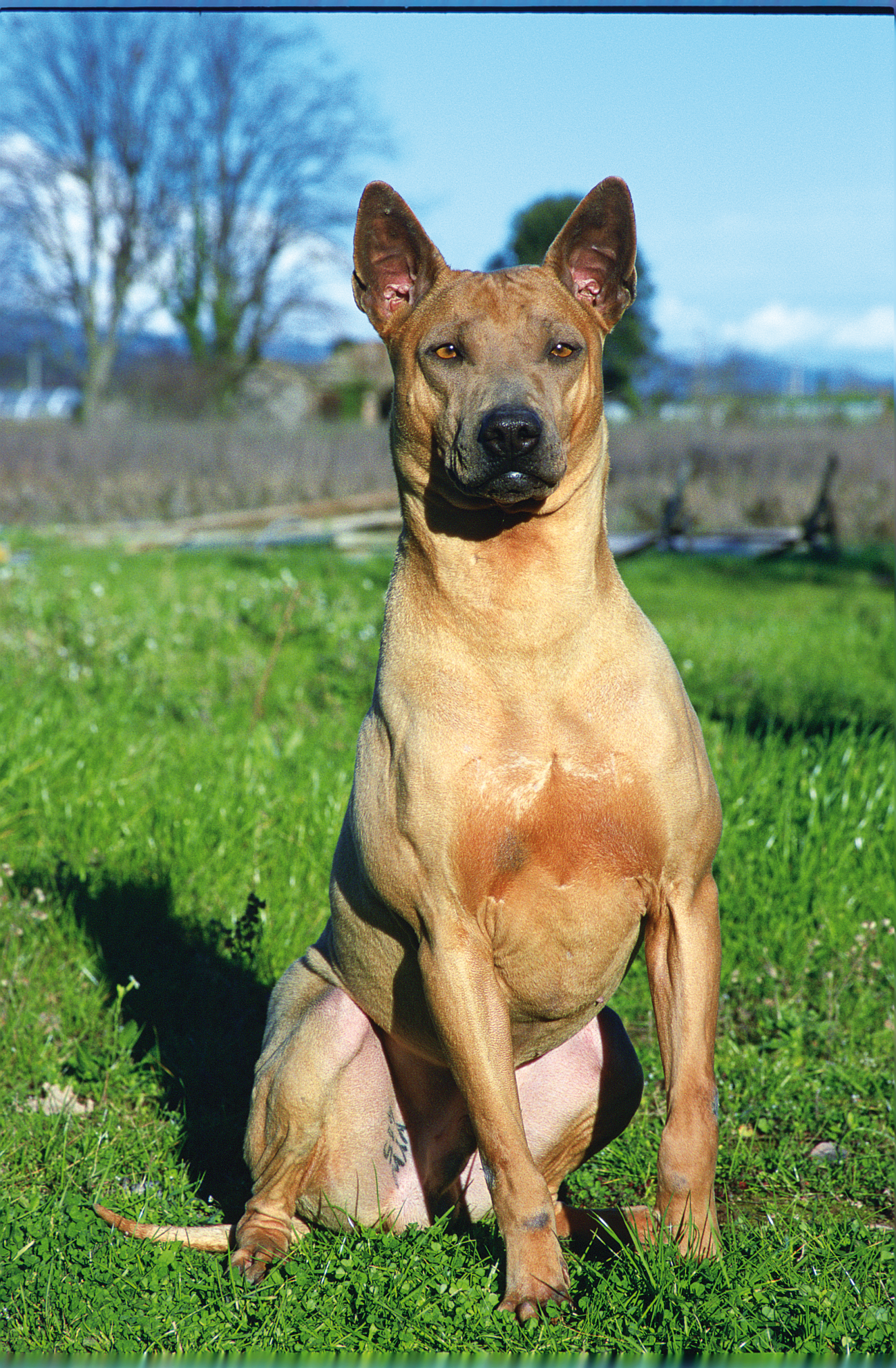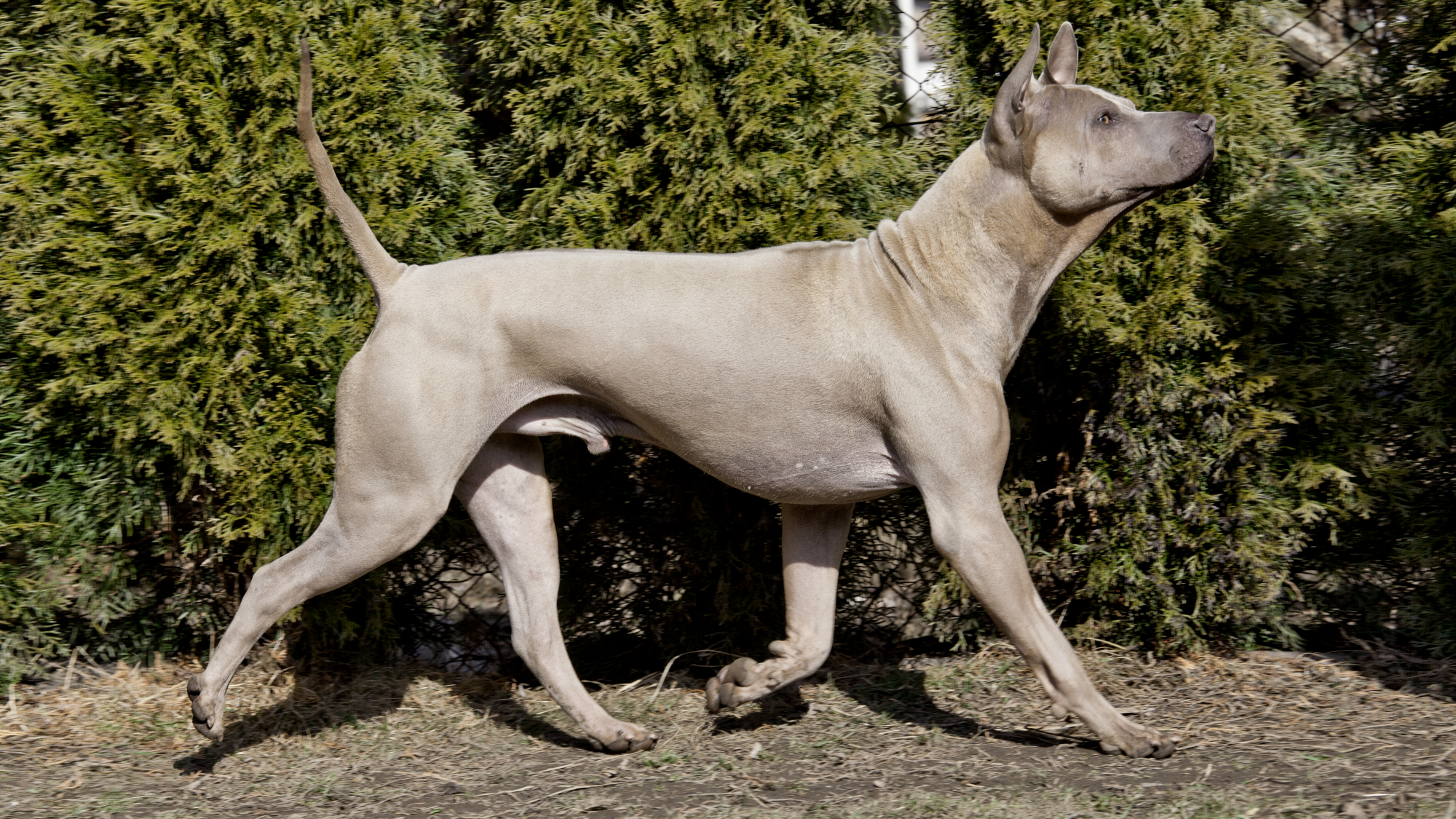
Let's talk Thai Ridgebacks
The Thai Ridgeback dog is well-known for the signature ridge of fur that runs along their back in the opposite direction on their sleek, smooth coat. Fairly isolated origins make them a rare breed, upping the cool quotient. And then there is that capacity to play, which the Thai Ridgeback has in spades, always up for hide-and-seek or learning tricks. New owners should read up on the breed, a traditional guard and hunting dog that has made the transition to family pet well but whose active manner needs to be taken into consideration.Official name: Thai Ridgeback
Other names: Thai Ridgeback Dog, Thai Crested Dog
Origins: Thailand

| Drooling tendencies |  |
Warm weather? |  |
| Shedding level |  |
Suited to apartment living? |  |
| *Energy Level | Moderate | *Friendly pet? |
 |
| Compatibility with other pets |  |
*Can stay alone? |  |
* We advise against leaving pets alone for long stretches. Companionship can prevent emotional distress and destructive behaviour. Speak to your veterinarian for recommendations.
Every pet is different, even within a breed; this snapshot of this breed specifics should be taken as an indication.
For a happy healthy and well-behaved pet, we recommend educating and socializing your pet as well as covering their basic welfare needs (and their social and behavioral needs).
Pets should never be left unsupervised with a child.
Contact your breeder or veterinarian for further advice.


| Baby age | Birth to 2 months |
| Puppy age | 2 to 10 months |
| Adult age | 1 to 7 years |
| Mature age | 7 to 10 years |
| Senior age | From 10 years |

1/7
Get to know the Thai Ridgeback
All you need to know about the breed
Even those in the know where canines are concerned aren’t too familiar with the Thai Ridgeback breed. That’s because this very unique dog has had an isolated upbringing in their native Thailand. Would-be owners can relish in the fact that they won’t see their dog coming and going at the end of every leash.
A taut, muscular body is the result of years of this dog’s use for hunting large game of all sorts. The Thai Ridgeback of today is used largely as a family companion, with correct training, and makes a very faithful one at that.
The Thai Ridgeback’s polished appearance makes this an eye-catching dog, with their alert manner a plus for those who cherish that in an active dog. That said, the Thai Ridgeback may not be the best breed for first-time owners. It’s not that they don’t make a good domestic pet, it’s just that their nonstop approach may not have universal appeal. The breed has an activity level rated as moderate but their traditional use in a hunting and guardian capacity is hard to shake, even when they are a more domesticated dog. Make sure any breed is the one for you before welcoming them into your home.

2/7
2 facts about Thai Ridgebacks
1. Living on the ridge
Only three dogs in the world sport a ridge of fur that runs in the opposite direction down their spine: the Rhodesian Ridgeback, the Phu Quoc Ridgeback, and the Thai Ridgeback, and it comes in eight different patterns. Some Thai Ridgebacks are born plush-coated - without this defining characteristic - but they’re considered a purebred nonetheless.
2. Not seen by all
Those who seek to add the Thai Ridgeback to their home will find a challenging search ahead of them. The breed is not commonly seen outside of their native Thailand or found in many locales. Their medium-to-high energy level, good dose of intelligence, and amenable attitude are all super characteristics that make them in demand by fans of the breed.
History of the breed
The Thai Ridgeback dog has a long history exclusive to their namesake Thailand. Very rare outside of its borders, the breed was kept intact due to being isolated as they were found most on the eastern Thai island of Dao Phu Quoc, near the border of Cambodia and Vietnam.
They are known as a “pariah” dog, which may sound off-putting but the term is used to describe a dog who exists as a semi-wild breed living near man and reproducing on their own. Semi-domesticated dogs surfaced in Thailand around the 1600s, with the first documented Thai Ridgebacks occurring 350 years ago.
Their first appearance stateside was in 1994 with the American Kennel Club adding the breed to their Foundational Stock Service group in 1997. The Thai Ridgeback was then officially recognised by the United Kennel Club in 1996.

4/7
From head to tail
Physical characteristics of Thai Ridgebacks
1. Ears
Fairly long ears hanging at side of head, set high.
2. Head
Rounded head somewhat large compared to slim build.
3. Body
Lithe, athletic body, very solid, harmonious proportions.
4. Tail
Long tail in line with the body.
5. Coat
Shorthaired water-resistant coat, fur very tight, hard, and even.

5/7
Things to look out for
From specific breed traits to a general health overview, here are some interesting facts about your Thai Ridgeback

6/7
Caring for your Thai Ridgeback
Grooming, training and exercise tips
Grooming the Thai Ridgeback requires simply weekly brushing as this dog’s single coat is short, hard, and straight. Baths should only be taken as-needed. The breed’s nails grow fast so keep on top of trimming to prevent splits and cracks. Clean eyes and ears regularly too, and brush their teeth routinely (daily if possible). Exercise for the Thai Ridgeback will be quite necessary as this traditional guardian dog and born athlete is used to being on the move. This is an energetic dog with a very muscular body who has a huge amount of agility. Make sure to have enough room for them to run and take them on a few daily walks. Proper socialisation is key when training your Thai Ridgeback. They’re a highly independent, somewhat primitive breed and are known to be stubborn - more often to see what they can get away with. The breed may be overprotective of owners (they are highly loyal) and somewhat wary of those they don’t know but will warm up to newcomers with the right introductions.
7/7
All about Thai Ridgebacks
This athletic and affectionate breed is little known outside of their native Thailand where their history is said to go back thousands of years, and to an isolated part of the country that gave them their solitary status. Only about 300 of the dogs, for example, are said to exist in the United States.
The Thai Ridgeback and the Rhodesian Ridgeback are two very distinct breeds of dog - one hailing from Thailand, the other from Africa. The only tie that binds them is the hallmark ridge of fur on their spine running in the opposite direction. Both dogs’ sleek and lithe musculature made them suitable for their roles as hunters on their respective continents but their appearance - facial features, ears, and head are quite dissimilar.
translations.feature.breeds.otherbreeds
Read more on this topic

How your dog's nutrition needs change with age

How to adopt a dog

Things to consider before getting a dog
Sources
1 - Veterinary Centers of America https://vcahospitals.com/
2 - Royal Canin Dog Encyclopaedia. Ed 2010 and 2020
3 - Banfield Pet Hospital https://www.banfield.com/
4 - Royal Canin BHN Product Book
5 - American Kennel Club https://www.akc.org/


